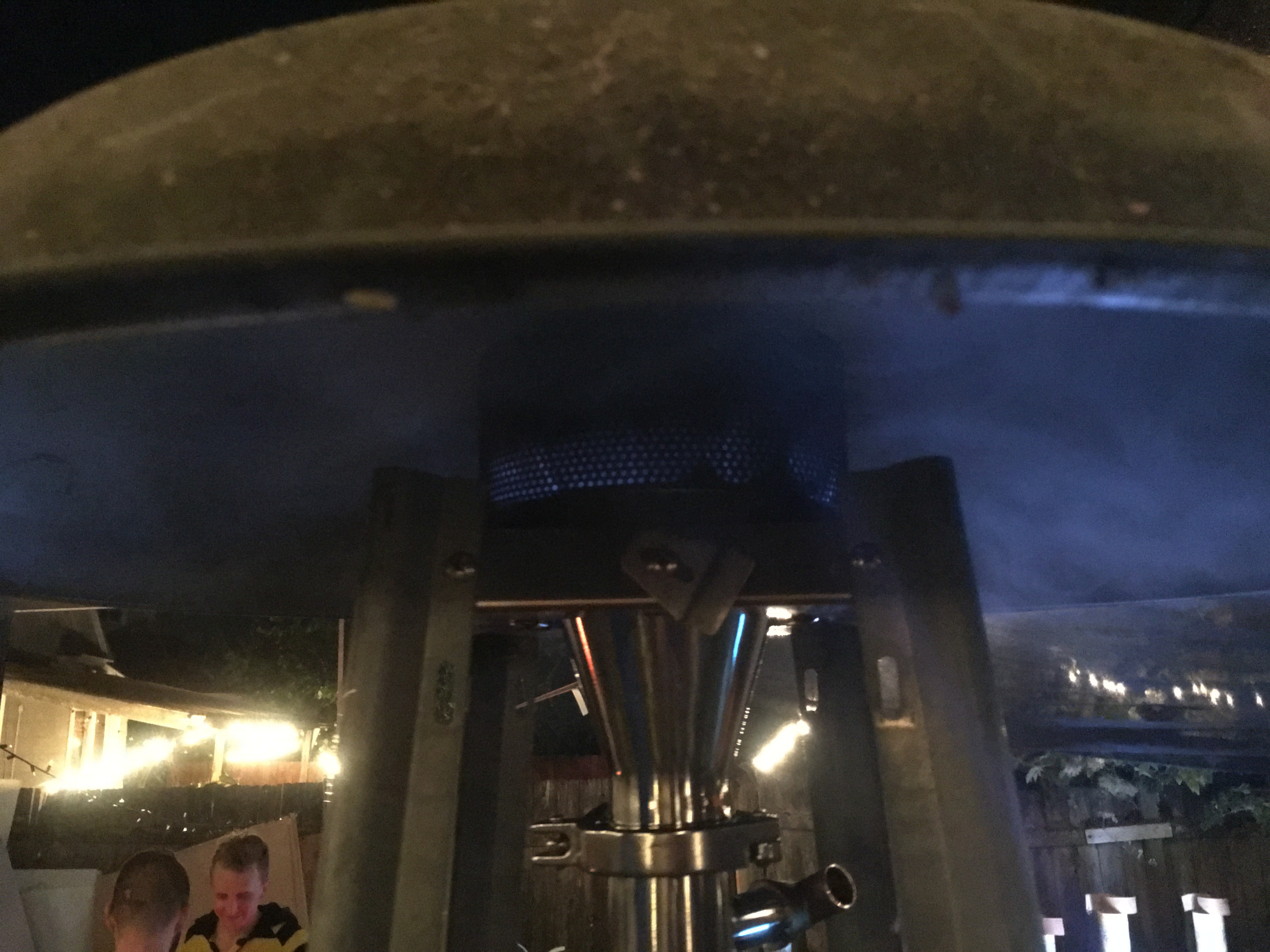I had some friends over last night and fired up a new set up for the first time. In this iteration, I had one keg filled with raw, wet woodchips, and the larger keg around it filled with charcoal (that I had made myself, from the previous batch). By blowing air in around the charcoal, I was able to start thermally decomposing (and drying) the woodchips inside the keg.


I was hoping to get an inverted flame effect, and for a while I kind of did, which is exciting. The flame is very blue, which means the gas is quite clean and free of particulate. But this is the effect I was hoping for:

This is one of my favorite fire effects- it happens when you pump a flammable gas into in concave container, so that the hot gas pools inside the container, and only burns at the boundary between the hot gas and the air. This gives a really beautiful, dynamic, undulating flame effect. It's mesmerizing to watch.
However, there was a TON of water in these woodchips, and so the gas was mostly steam. I knew this was going to be a problem, but I fired them wet anyway just to see what happens. Above, you can see what happens. That blue glow inside the chimney is the flammable vapors burning, but surrounding it is a huge cloud of water vapor. The water vapor "waters down" the gas and makes it difficult for it to ignite and stay lit.
Still, I was surprised to get any flame at all, honestly.
Here's what I learned from this test:
-The material needs to be dried before burning (duh)
-An inverted flame effect is probably possible.
-I can power the reaction using homemade charcoal (no propane this time!)
And here's what I'll probably try differently next time:
-Add in distillation cups and see what distills off
-Use 100% dry material only and/or figure out a way to apply low heat (charcoal has basically two temperatures- cold, and really f*cking hot. Not ideal for boiling off water without also making a bunch of smoke. A PID-controlled electrical heating element might work better for this)
-Use the flame effect as a visual feedback mechanism to confirm presence of clean gas, and add in a valve or solenoid to redirect the gas to storage once I know it's clean.
 Sam Smith
Sam Smith
Discussions
Become a Hackaday.io Member
Create an account to leave a comment. Already have an account? Log In.